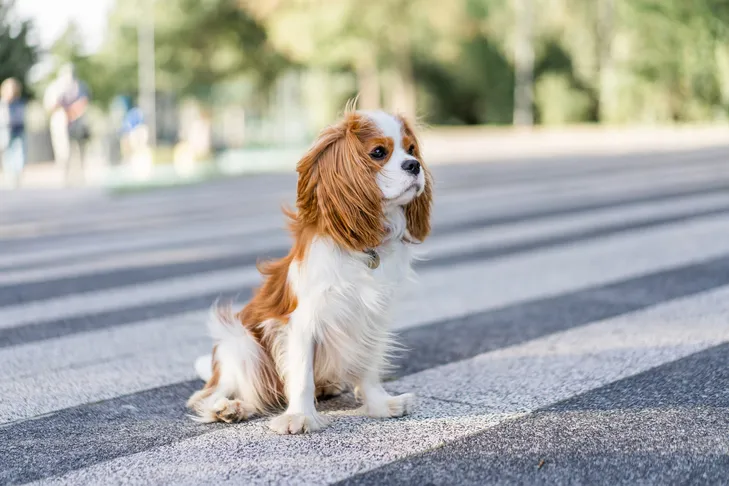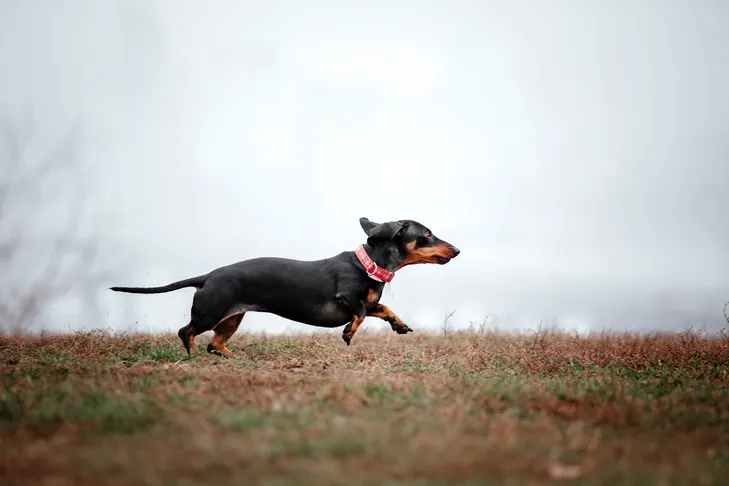It’s a common scenario for many dog owners: calling your dog repeatedly, only to watch them remain engrossed in sniffing the grass or chasing a distant scent. When you ask your dog to “come,” you’re not just giving a command; you’re expecting them to drop everything and return to your side immediately. This is a significant ask, but crucial for their safety. A truly reliable recall is more than just convenient; it’s a potentially lifesaving skill, ensuring your dog will come to you in any emergency. Learning the best way to house train a dog or other basic obedience commands are essential building blocks, but mastering the recall is paramount for every dog owner. This guide will walk you through How To Train Your Dog To Come No Matter What, building up their understanding and responsiveness step-by-step.
Laying the Foundation: Name Recognition and Collar Grabs
Before diving into the “come” command, your dog needs to understand a few preparatory cues. The primary one is their name, which should always signify, “pay attention to me.”
Teach Your Dog Their Name Means “Attention”
The goal here is to teach your dog that hearing their name means they should immediately look to you for further instructions. You can achieve this with a simple game:
- Say your dog’s name clearly.
- The instant your dog looks at you, mark the moment with a verbal cue like “yes!” or a clicker, then immediately give them a high-value treat or praise.
- Start in a quiet environment with minimal distractions. As they improve, gradually introduce more exciting surroundings.
With consistent practice, your dog will quickly learn that their name signals a potential reward, making them attentive and ready to receive your commands. This focus is the critical first step in ensuring a reliable recall.
 Cavalier King Charles Spaniel sitting in a crosswalk at the park.
Cavalier King Charles Spaniel sitting in a crosswalk at the park.
Master the “Gotcha” Game for Safe Handling
Many dogs instinctively pull away when you reach for their collar. However, in an emergency, you need to be able to quickly and safely secure your dog. The “gotcha” game teaches your dog that a collar grab is a positive experience, often leading to something wonderful. This exercise is also invaluable for everyday tasks like attaching a leash or leading them to the bath, reinforcing their comfort with handling.
Follow these steps to teach the “gotcha” cue:
- Lure your dog close with an irresistible treat. Allow them to lick or nibble it, but don’t release the whole treat yet.
- Say “gotcha” in a friendly tone, then slowly and gently take hold of their collar. Once you have a secure grip, release the remainder of the treat for them to enjoy.
- As your dog becomes more comfortable, gradually increase the speed and firmness of your collar grabs.
- Eventually, wait to give the treat until after you’ve said “gotcha” and secured their collar, teaching them that the grab itself precedes the reward.
- Practice collar grabs in various locations and situations, always ensuring a positive reward follows.
Once your dog associates collar grabs with positive reinforcement, you’ll have no trouble restraining them when they return to you. This prevents a common issue where dogs come close but then dart away as soon as you reach out. Mastering this foundation is as important as teaching your dog how to train a dog to stay in a kennel for their overall safety and compliance.
 Dachshund running in a field.
Dachshund running in a field.
Step-by-Step Guide to a Rock-Solid “Come” Command
Now that your dog understands their name and is comfortable with collar grabs, you’re ready to teach the actual recall. The secret to success lies in making yourself the most exciting thing in your dog’s environment. If you’re the source of all fun and good things, your dog will naturally want to come and investigate. A stern or boring tone, however, will do little to entice them. Begin this training in a calm, quiet environment with your dog on a leash, as it’s easier to be exciting without competition.
Always use rewards your dog absolutely loves, whether it’s a high-value treat like chicken or a favorite toy for a quick game of tug-of-war. Make their effort so worthwhile that ignoring your call is simply not an option.
Here’s how to get started:
- Initial Practice (Close Range): With your dog a few feet away, say their name, then “come,” and actively encourage them to approach you. Pat your legs, make happy kissing noises, or clap your hands to create excitement.
- Mark and Reward: The instant your dog moves towards you, mark the moment with a clicker or a verbal “yes!” and shower them with enthusiastic praise while delivering their favorite reward.
- Increase Distance: Once your dog reliably comes when called from a short distance, gradually increase the space between you. Let them wander to the end of their leash before calling them back.
- Off-Leash Indoors: Move to a quiet room and practice off-leash. To make it more enticing, run backward as you say “come”; dogs naturally enjoy a good chase.
- Vary Locations: Repeat this training in different rooms of your house to generalize the behavior.
- Add a “Sit” Command: When your dog consistently runs to you, ask for a “sit” as they arrive. Then, mark, praise, and reward. This teaches them to remain stationary upon arrival, preventing them from bouncing away immediately after getting their treat. Just as you might teach how to get puppy to use pee pad with consistency, the “sit” adds another layer of reliable behavior.
- Re-integrate “Gotcha”: Every so often, add a “gotcha” after they’ve sat and received their reward, reinforcing that it’s perfectly fine for you to hold onto their collar.
Crucially, every time your dog comes to you, provide abundant praise, petting, play, and a treat or toy. Never be stingy with your rewards during recall training; your dog should perceive coming when called as an incredibly fun and rewarding experience. You can even incorporate fun recall games like “round robin,” where multiple people take turns calling your dog, or “find me,” where you hide in another room before calling them.
 French Bulldog wearing a jacket walking down a path in the park.
French Bulldog wearing a jacket walking down a path in the park.
Building Reliability: Introducing Distractions Gradually
Once your dog reliably comes to you anywhere inside the house, it’s time to introduce distractions. Start small and build up gradually. Begin with minor indoor distractions such as another pet in the room, someone cooking in the kitchen, or you gently tossing a ball in your hand. Over time, progress to more significant distractions.
Next, take your training outdoors. However, resist the urge to immediately let your dog roam free. Even if their recall is 100% perfect indoors, the outdoor environment presents a completely new set of challenges and temptations. Start your outdoor training with your dog on a 6-foot leash and repeat the steps outlined above. Gradually increase the challenge by using a 20-foot or even a 30-foot long line. This line serves as a safety measure and a way to control the situation, not to yank your dog back if they ignore you. If your dog doesn’t respond, simply walk closer to them while gathering the line and try the command again.
If your dog consistently ignores your calls, it’s a sign to troubleshoot your training. There can be various reasons your dog doesn’t come when called. The most common issue is asking for too much too soon. Take several steps back in your training, returning to a simpler, less distracting environment, and build confidence again. With patience and consistent practice, your dog will develop a reliable recall that works anywhere and anytime. However, it’s vital to remember that even the most well-trained dog may not be 100% perfect in every single scenario. Therefore, always prioritize your dog’s safety and only let them off-leash in secure and safe environments, or consider advanced training like how to train your own service dog for higher reliability. If you’re also struggling with leash manners, learning to teach a dog to stop pulling on leash can complement your recall efforts by improving overall control.
Conclusion
Achieving a truly reliable “come” command is one of the most vital skills you can teach your dog, offering peace of mind and significantly enhancing their safety. By patiently laying a strong foundation with name recognition and positive collar grab associations, followed by a structured approach to the “come” cue in gradually more distracting environments, you can empower your dog to respond consistently. Remember, consistency, high-value rewards, and a positive, engaging attitude from your side are key to teaching how to train your dog to come no matter what. This lifesaving skill requires ongoing practice, but the bond and trust you build with your canine companion through this training will be immeasurable. Keep practicing, stay positive, and celebrate every successful return!
